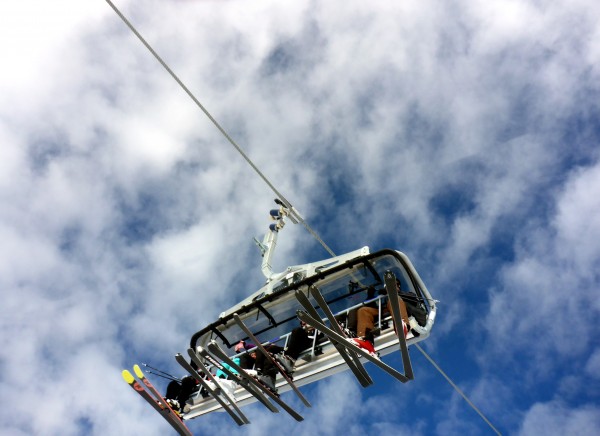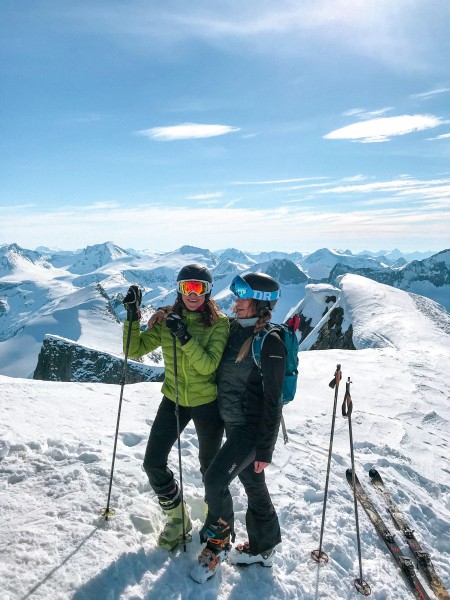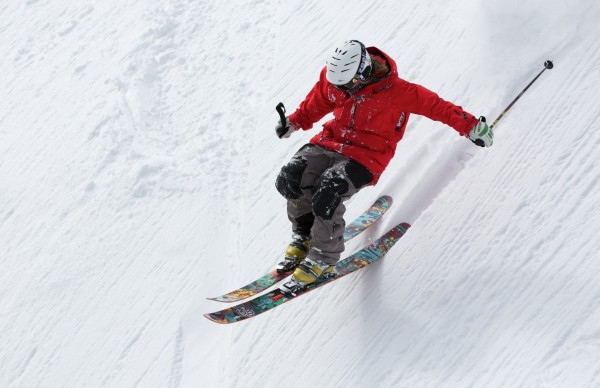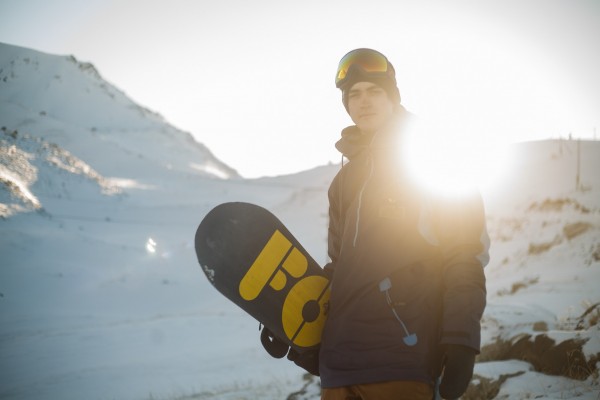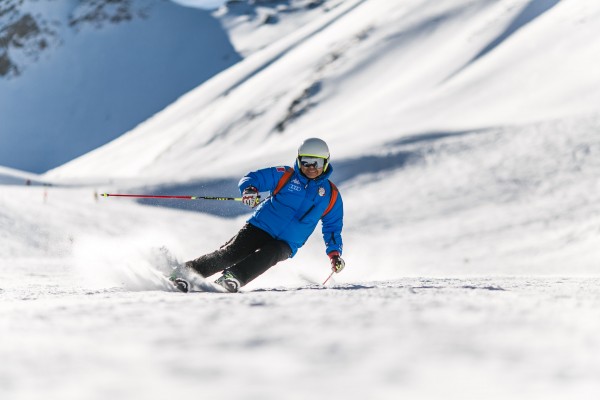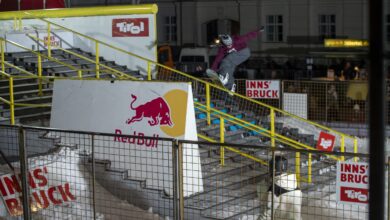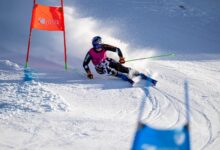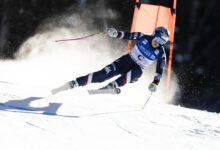Skiing or Snowboarding? ‘The fiery Feud’
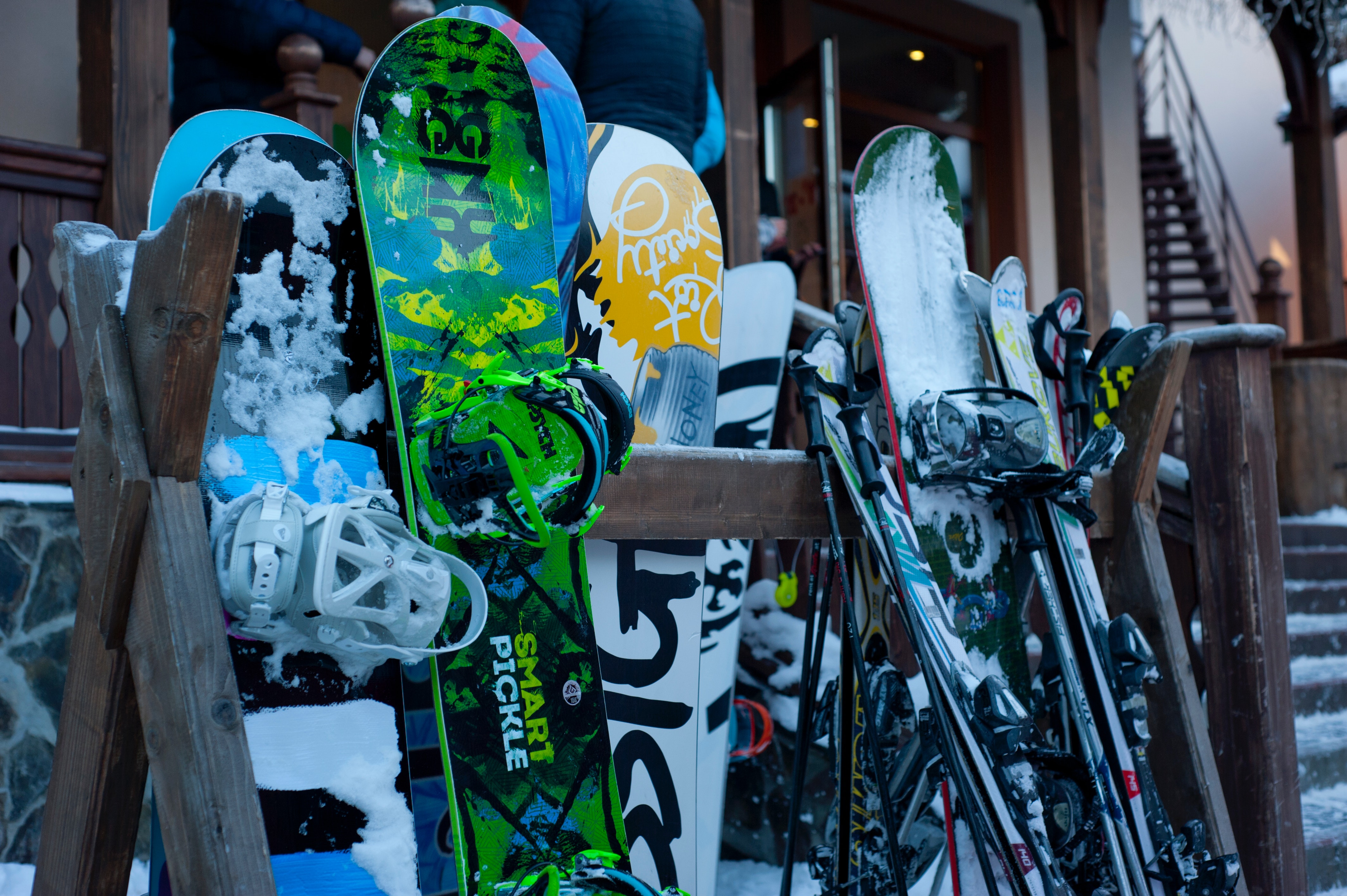
There was a time when this question would have evoked enough passion for fists to fly and people to be banned, but the fiery feud between skiers and snowboarders has somewhat ‘cooled’.
Today, skiers and snowboarders share the slopes (to an extent), and so those heading up the mountain for the first time have a real choice to make: do I ski, or do I snowboard?
What’s easier?
What’s cooler?
What’s less painful?
Both skiing and snowboarding are great for beginners – skiing because it is easier to pick up and to stop without falling over which has some real basic advantages. Snowboarding just looks more fun and if you have ever surfed or skateboarded there is some crossover skills.
But to be fair most people heading to the mountain for the first time should simply choose to do what their mates or group does; it will just be more fun, and you will get some personal one on one teaching from your peers who have done it before (everyone wants to give tips) and you’ll stick together. Even the simple processes of getting on and off the chairlift, using the T-bar and traversing (moving across the slope) are different for both skiers and snowboarders so with mixed groups (especially for beginners) there tends to be a bit of waiting around, unexpected crashes and downtime which can be frustrating.
So what are the basic pros and cons of skiing verses snowboarding.
The first thing most beginners want to know is which is more difficult to learn? For most people who have tried both skiing and snowboarding the general consensus is that it is easier to learn the basics of skiing.
As we stand on two separate legs every day and tend to use those legs one at a time, and although while skiing your legs move in unison they are not ‘bound together’. Whereas a snowboard locks your legs together which can feel disconcerting and frustrating if it’s your first time.
The upside of snowboarding is that once you’ve got your sense of stability, it’s simple to make progress by sliding horizontally sideways down the hill.
Skiing, however, tends to feel like you have more control as you are standing and facing forward which seems more natural, it can be a bit chaotic up until you’ve mastered the snowplough / piece of pizza technique. But once you’ve got the basics of controlling your speed, by slowing using those pizza-shaped turns, you feel more in control, as your confidence builds you can move your feet while initiating turns, increasing speed and able to deal with stepper slopes.
With snowboarding your need to progress from sliding sideways slowly, it is about learning frontside and backside turns. This stage is perhaps the most demanding for learner and it pays to get a lesson as there are a range of simple techniques which will help. Learning to transition from frontside (edging on your toe side) to backside turns (edging on your heel side) can be a slow and sometimes painfully wet process.
Snowboarding you spend a lot of time on your butt and on your hands, (we strongly advise get wrist guards or you have a high chance of a broken wrist) but when you’ve learned how to ride on your edges, you will then progress quickly.
It’s often said that skiing is easier to learn, but harder to master. Moving away from the pizza pie stance and learning to execute full parallel turns takes time and practice. Using the edges on skis requires you to control both skis independently, but also, in unison – it’s a little complicated but easy once you get the hang of it. When you’ve mastered turning on a slope, you’ll soon be tackling almost any terrain and as you get better you will go faster and steeper.
So which to choose?
Most people will find that skiing is primarily easier and if you are only on the mountain for a few days per year then it’s a good place to start. However, if you have the time and are happy getting a wet butt, your efforts will be rewarded snowboard works really well when the conditions are not firm (icy).
It’s common now for people to both ski and snowboard – skiing is better in firm conditions, easier to hold an edge, but in powdery or slushy condition snowboarding can feel more in control.
Then there are the lifts!
In New Zealand you will need to learn to tackle the ‘lifts’ and it can be a bit daunting. Snowboarders will find the various lift systems T-bars, rope tow and chairlifts more ‘challenging’ than skiers, for skiers it’s easier it’s just the nature of facing forward, skiers ride and get on and off lift systems facing forward- whereas snowboarders need to rotate their torso in order to exit or use the lift.
Be prepared for a few bails in particular on a T-bar which to skiers is easy and for snowboarders it looks like torture. Remember if you fall off the chair stay low and get out of the way and on a rope tows or T-bars move to the side as soon as possible – or you will add to the carnage because those coming up behind you.
One of the biggest surprises for those new to snow is just how challenging demanding skiing and snowboarding can be. Like any new sport there is an additional degree of exertion needed. Before heading up it’s a good idea to work on your fitness to get the most out of your time. Both skiers and snowboarders will feel it in their legs, but the demand is perhaps higher on skiers with much of their body weight supported by one leg at a time. Snowboarders use their core to initiate turns and scrape themselves off the snow when the fall and they fall a lot.
So in short – choose what you feel will suit you and your group, take it slow, be respectful to others on the slope and most of all have fun!
Hot tips
Hire your gear locally so if it breaks or you change your mind, or you can take it back.
Start slow and flat but move up as soon as possible, but don’t head straight to the top – staying on the flat you won’t improve fin d those gentle slopes.
Watch a few YouTube clips on ‘how too’ for beginners
Get a lesson early
Watch the weather and dress accordingly- no one want to be too hot or too cold.
Stop often for break
Snowboarders get good gloves and always wear wrist guards. Make sure your pants are really waterproof (they get wet).


